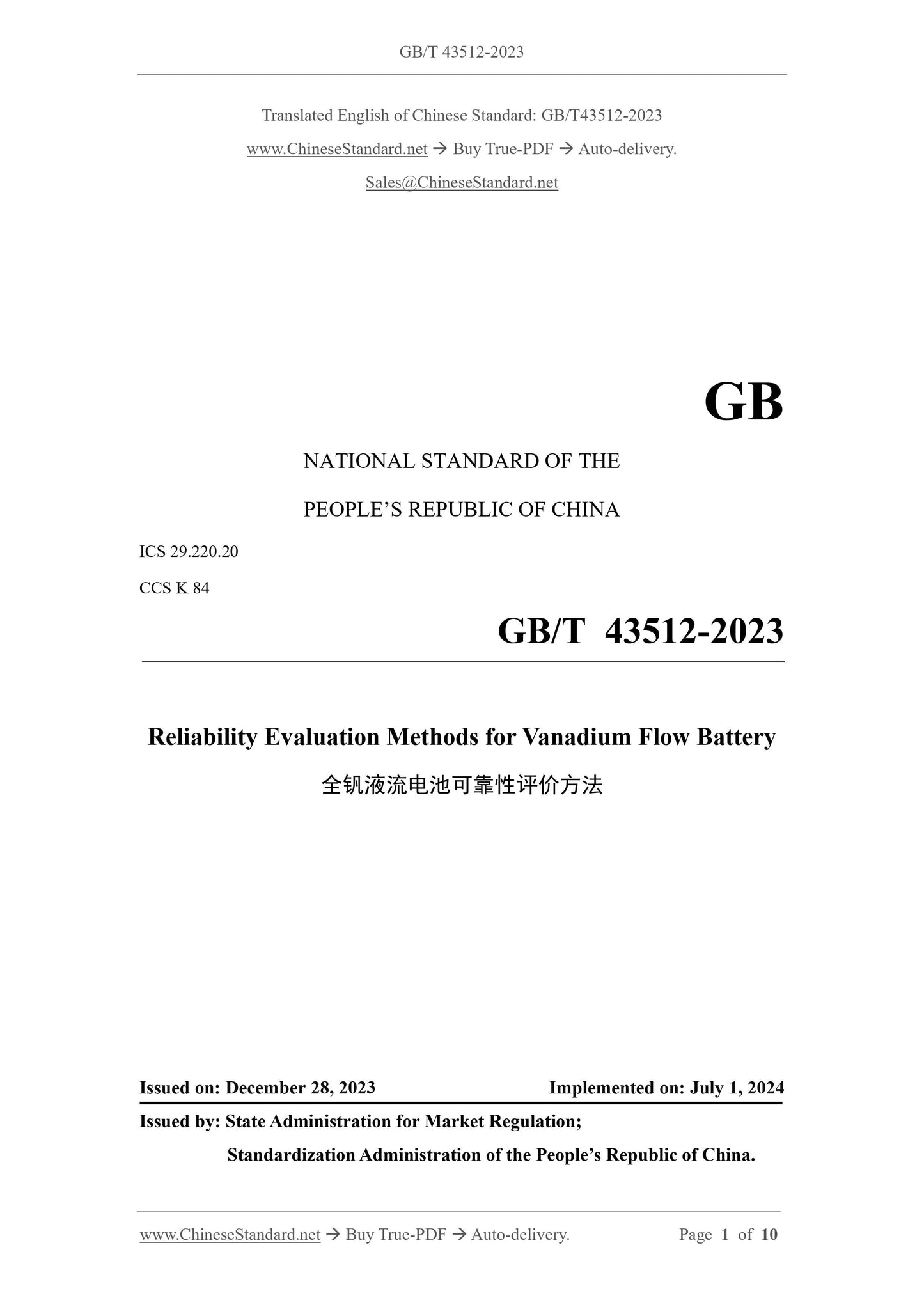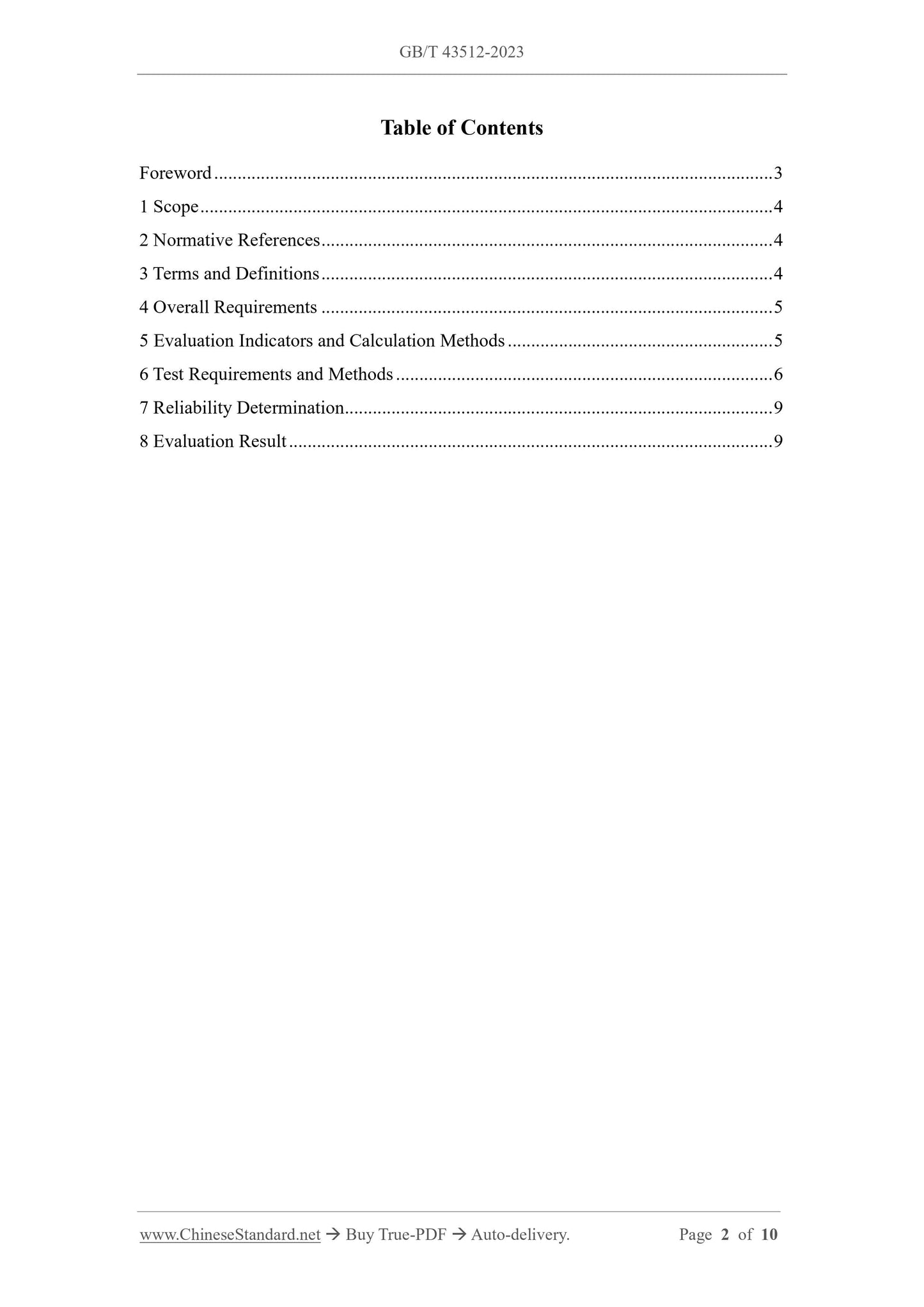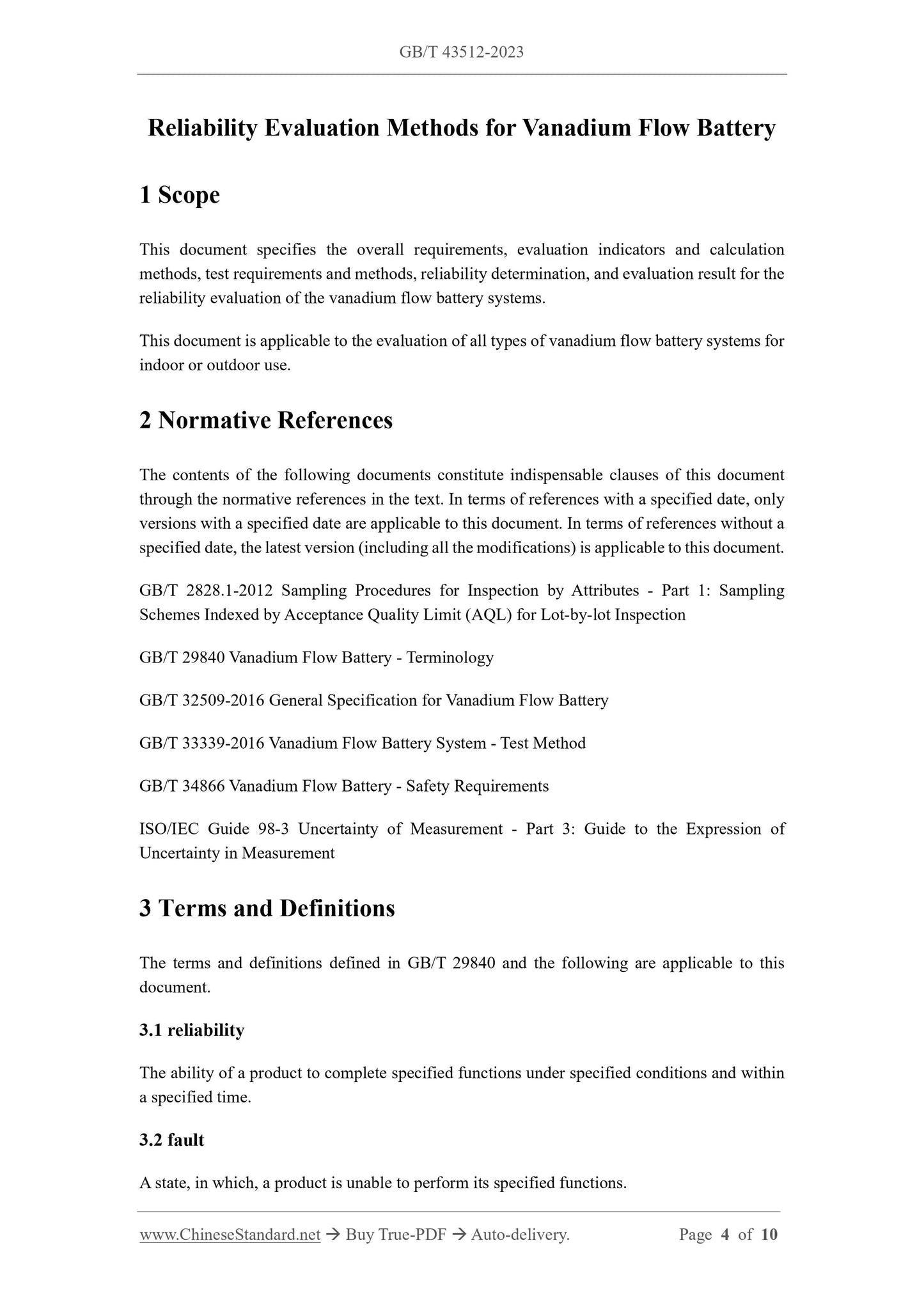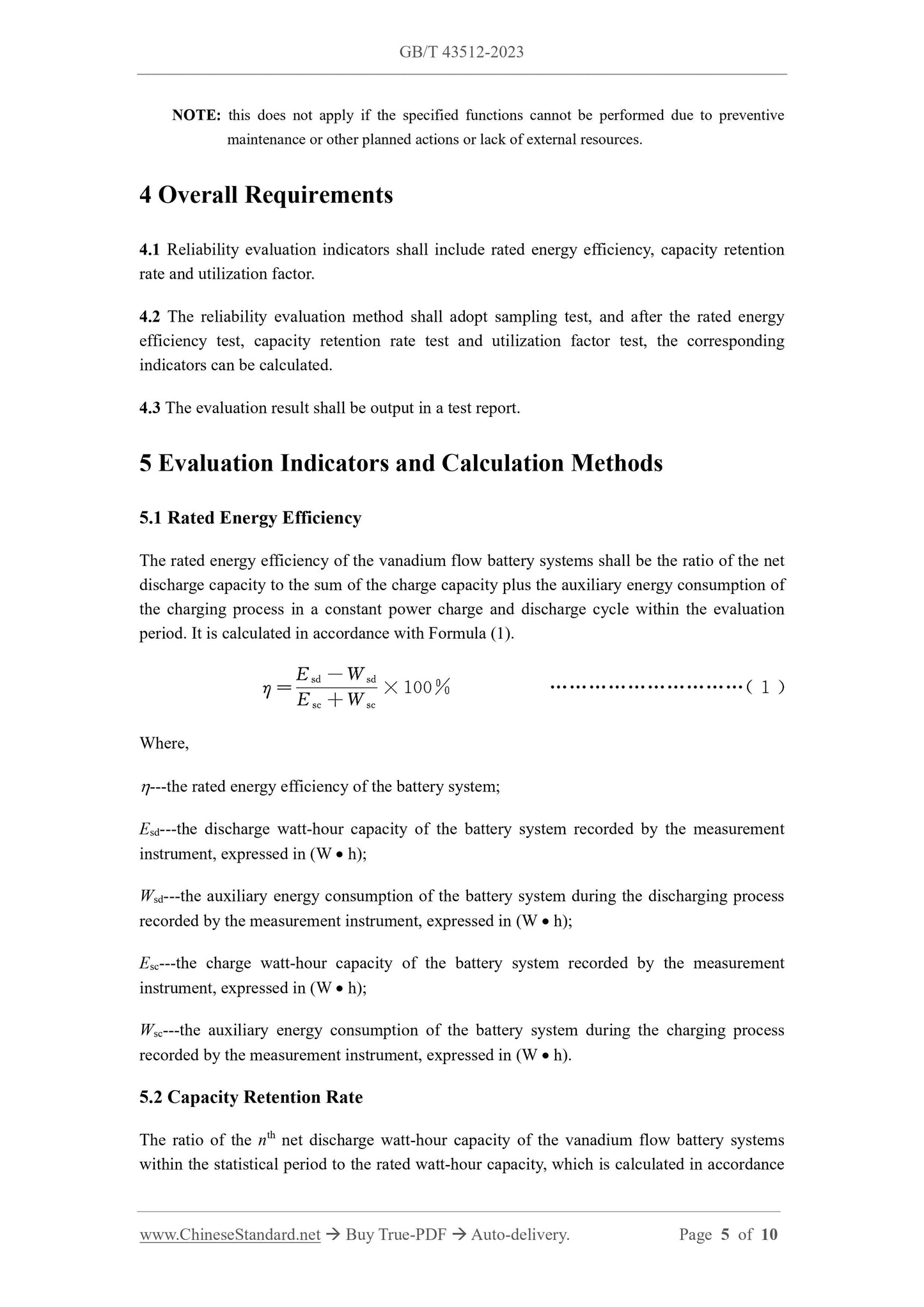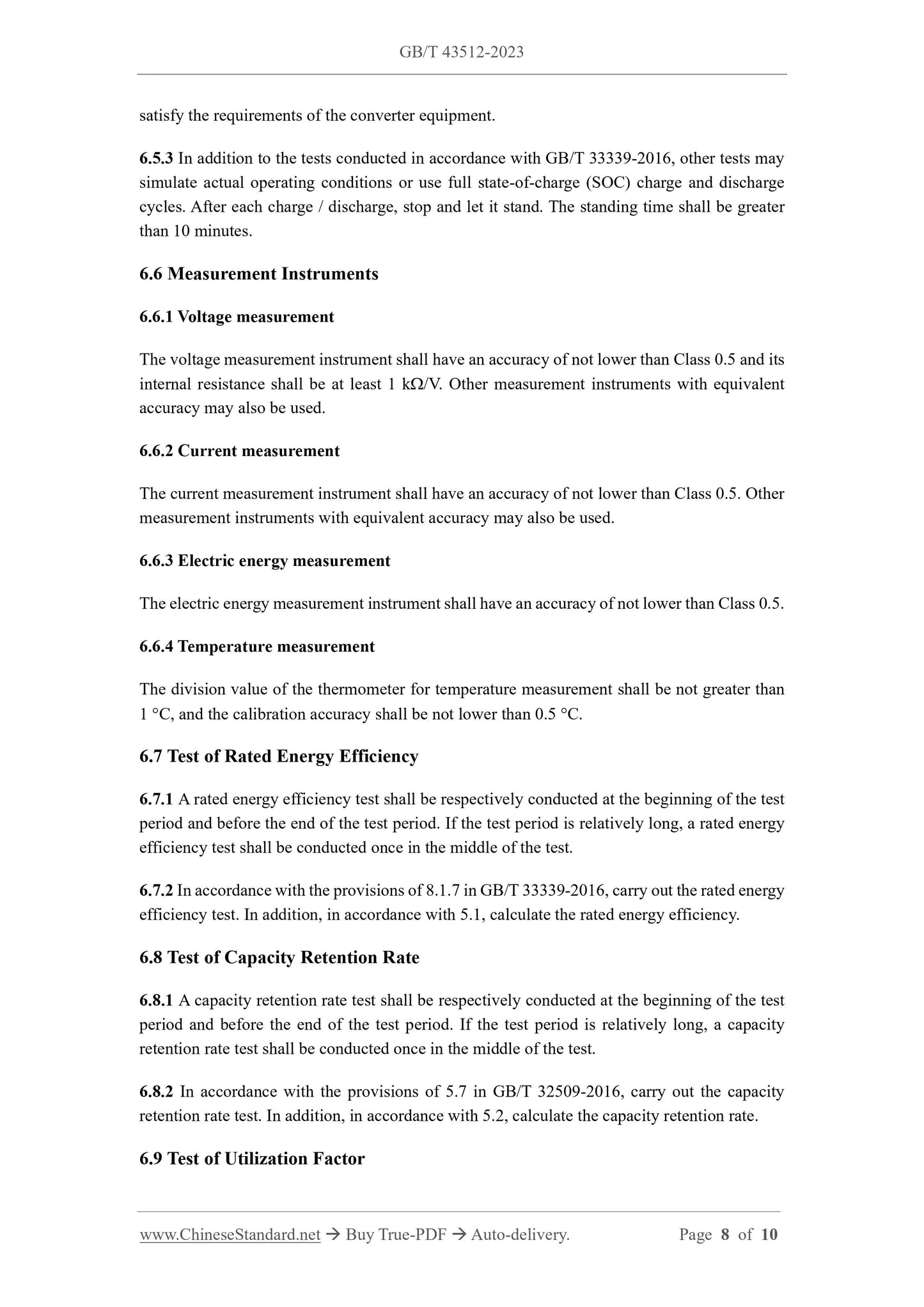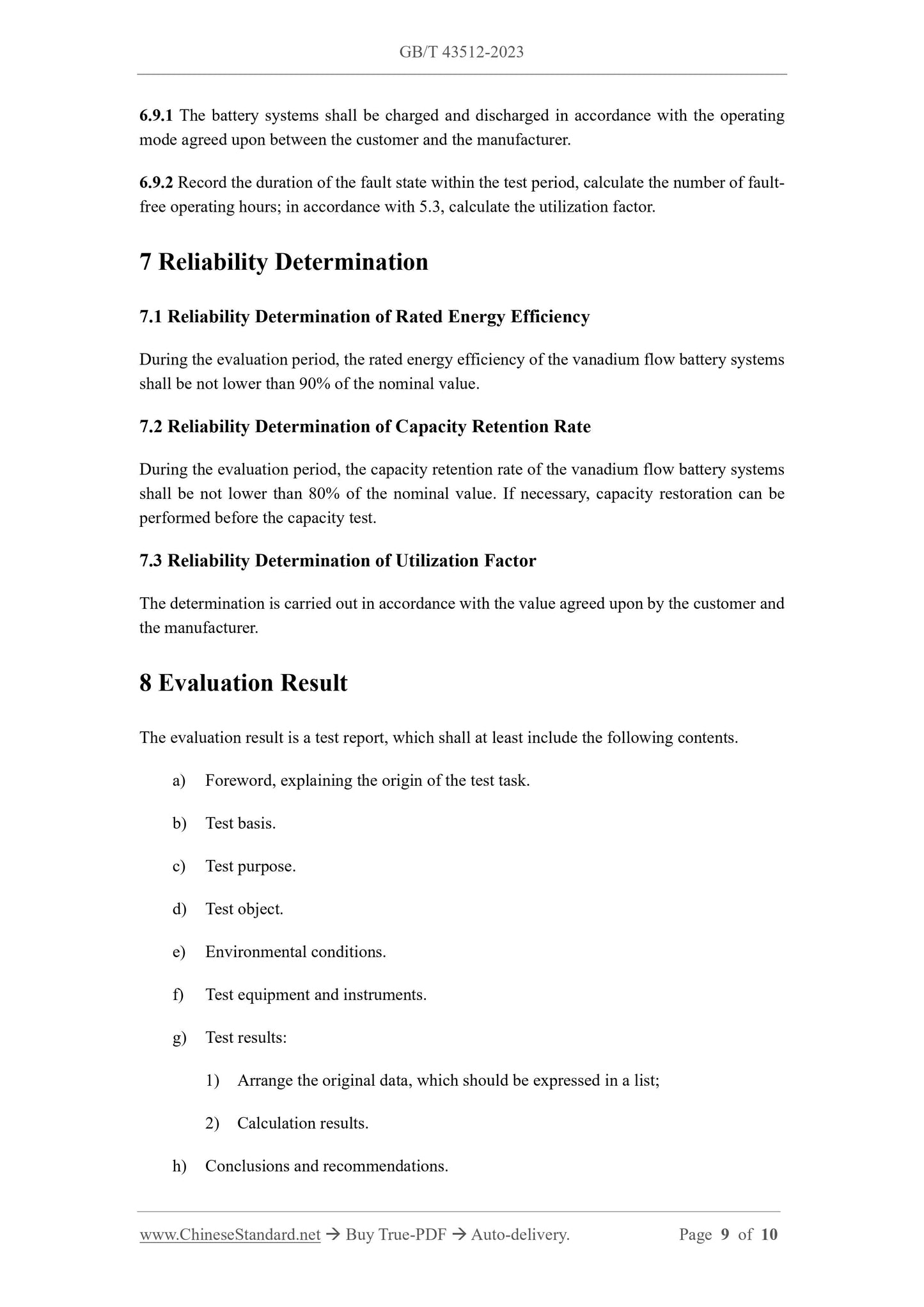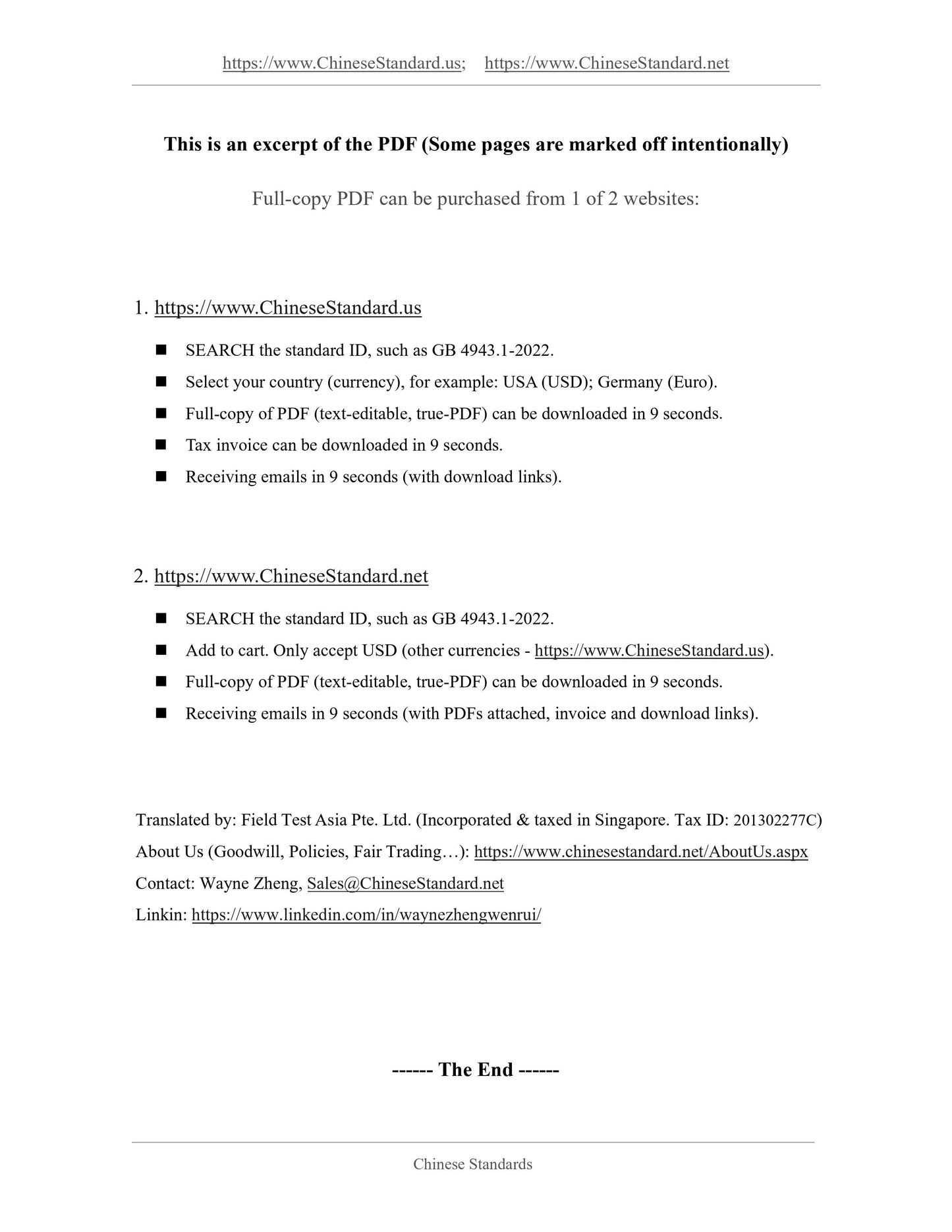1
/
of
7
www.ChineseStandard.us -- Field Test Asia Pte. Ltd.
GB/T 43512-2023 English PDF (GB/T43512-2023)
GB/T 43512-2023 English PDF (GB/T43512-2023)
Regular price
$205.00
Regular price
Sale price
$205.00
Unit price
/
per
Shipping calculated at checkout.
Couldn't load pickup availability
GB/T 43512-2023: Reliability evaluation methods for vanadium flow battery
Delivery: 9 seconds. Download (and Email) true-PDF + Invoice.Get Quotation: Click GB/T 43512-2023 (Self-service in 1-minute)
Newer / historical versions: GB/T 43512-2023
Preview True-PDF
Scope
This document specifies the overall requirements, evaluation indicators and calculationmethods, test requirements and methods, reliability determination, and evaluation result for the
reliability evaluation of the vanadium flow battery systems.
This document is applicable to the evaluation of all types of vanadium flow battery systems for
indoor or outdoor use.
Basic Data
| Standard ID | GB/T 43512-2023 (GB/T43512-2023) |
| Description (Translated English) | Reliability evaluation methods for vanadium flow battery |
| Sector / Industry | National Standard (Recommended) |
| Classification of Chinese Standard | K84 |
| Classification of International Standard | 29.220.20 |
| Word Count Estimation | 10,193 |
| Date of Issue | 2023-12-28 |
| Date of Implementation | 2024-07-01 |
| Issuing agency(ies) | State Administration for Market Regulation, China National Standardization Administration |
Share
